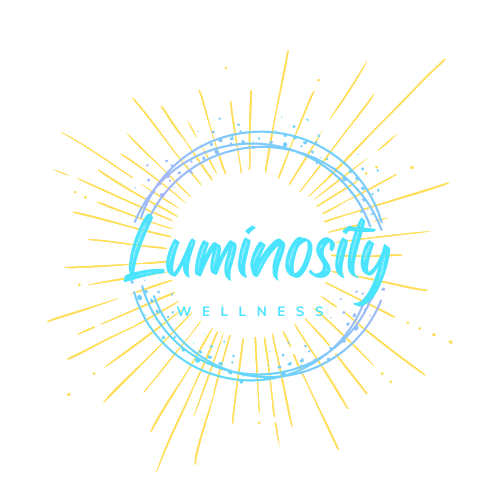In the modern world, stress has become an all too familiar companion in our daily lives. From demanding work schedules to personal responsibilities, stress can wreak havoc on our mental and physical well-being. Fortunately, there are various methods available to help manage and alleviate stress, and one powerful tool that often goes unnoticed is light therapy. I want to take a moment and explore three key mechanisms by which light therapy aids in stress management and then address some common myths and objections that may be hindering individuals from experiencing its incredible benefits.
Mechanism 1: Regulation of Circadian Rhythms
Our bodies possess a remarkable internal clock known as the circadian rhythm, which regulates our sleep-wake cycle, hormone production, and overall physiological processes. Stress can disrupt this delicate balance, leading to irregular sleep patterns, fatigue, and heightened anxiety. Light therapy, also known as phototherapy, utilizes specific wavelengths of light to help recalibrate our circadian rhythms and restore balance.
By exposing ourselves to bright light, especially in the morning, we stimulate the release of serotonin, a neurotransmitter that promotes feelings of well-being and happiness. Additionally, light therapy inhibits the production of melatonin, a hormone responsible for inducing sleepiness. By adjusting the timing and duration of light exposure, individuals can establish a more consistent sleep-wake cycle, enhancing their ability to manage stress effectively.
Mechanism 2: Activation of the Brain’s Reward System
One of the major contributors to stress is the overactivation of our brain’s stress response, primarily driven by the release of cortisol. Light therapy has been shown to activate the brain’s reward system, which helps counteract the negative effects of chronic stress.
When exposed to light, particularly bright light, the brain releases endorphins and dopamine—neurochemicals responsible for feelings of pleasure and relaxation. This activation of the reward system counterbalances the heightened cortisol levels, reducing stress and promoting a sense of calmness. Light therapy acts as a natural antidepressant, improving mood and combating anxiety, ultimately aiding in stress management.
Mechanism 3: Enhancing Vitamin D Levels
Vitamin D, often referred to as the “sunshine vitamin,” plays a vital role in our overall well-being, including stress management. However, many individuals struggle to maintain optimal levels of vitamin D, especially in regions with limited sunlight or during winter months. Light therapy can provide a valuable solution by stimulating the production of vitamin D in the body.
When our skin is exposed to specific wavelengths of light, it triggers a natural synthesis of vitamin D. Adequate levels of vitamin D have been linked to improved mood, decreased symptoms of depression, and enhanced cognitive function. By integrating light therapy into their routine, individuals can address vitamin D deficiencies, which may contribute to stress, and experience a boost in overall well-being.
Overcoming Myths and Objections…
While light therapy offers numerous benefits for stress management, some common myths and objections may prevent individuals from embracing its potential. Let’s address these concerns and provide some clarity:
Myth 1: “Light therapy is just a fad, and its benefits are exaggerated.”
Reality: Light therapy has a solid scientific foundation and has been extensively studied for its therapeutic effects. Research has shown its effectiveness in treating various conditions, including seasonal affective disorder, sleep disorders, pain management, and stress-related symptoms. The benefits are backed by empirical evidence and numerous success stories.
Myth 2: “I don’t have the time or money for light therapy.”
Reality: Light therapy is a versatile and cost-effective solution. Light boxes and lamps are available in various price ranges, making them accessible to a wide range of individuals. Additionally, integrating light therapy into your routine can be as simple as spending time outdoors during daylight hours or incorporating bright light exposure into your morning routine.
Myth 3: “Light therapy is only for individuals with certain diagnosed conditions.”
Reality: While light therapy is often used in clinical settings, it can benefit anyone seeking stress management. Whether you experience occasional stress or chronic symptoms, light therapy can provide a natural, non-invasive approach to enhance well-being and promote a healthier response to stressors.
Stress management is a vital aspect of maintaining a balanced and fulfilling life. Light therapy offers a promising avenue for individuals seeking effective and natural ways to combat stress. By regulating circadian rhythms, activating the brain’s reward system, and enhancing vitamin D levels, light therapy provides a holistic approach to stress management.
Let go of the myths and objections that may be holding you back from exploring this transformative therapy. Embrace the power of light therapy and illuminate your path to peace, allowing yourself to thrive in a world often overshadowed by stress.
Remember, seeking guidance from a qualified health practitioner who specializes in stress management can help tailor light therapy to your unique needs. Give our office a call and take the first step toward a brighter, stress-free future today.
